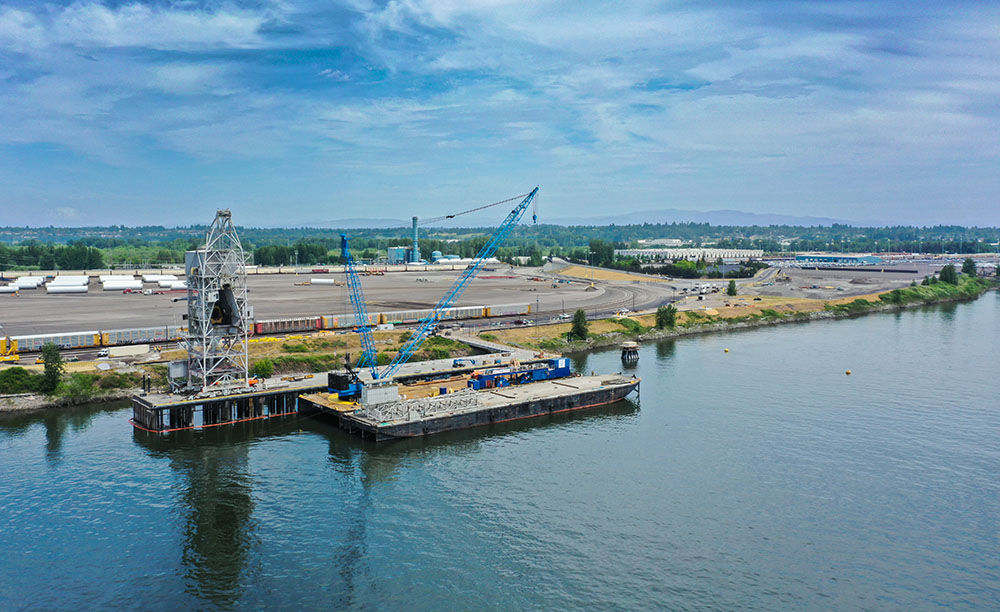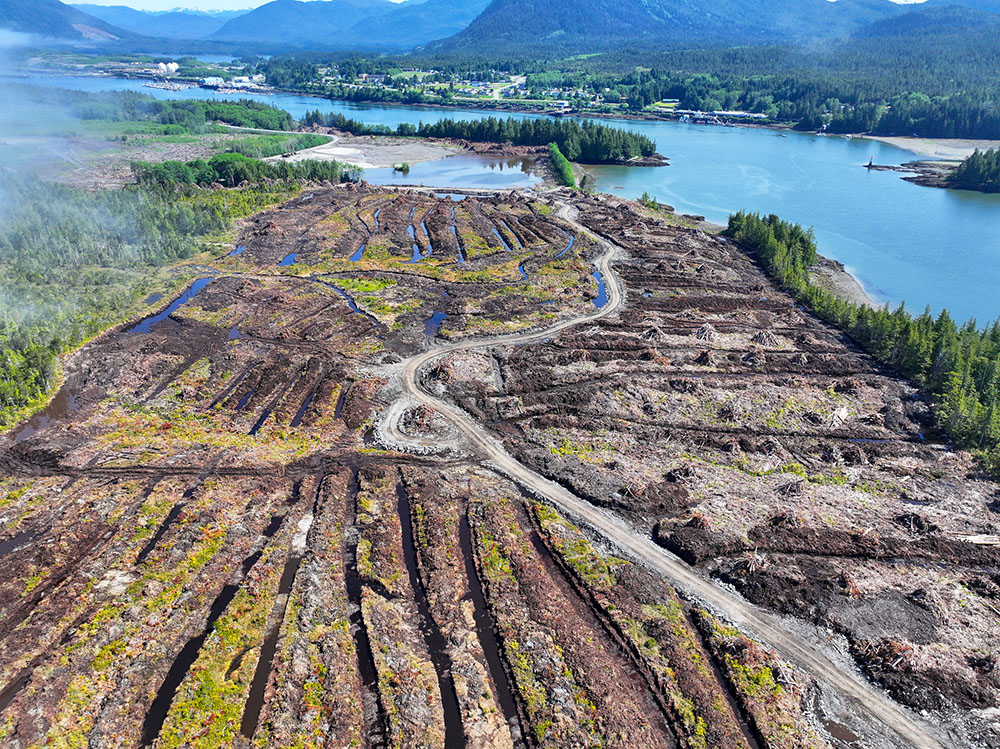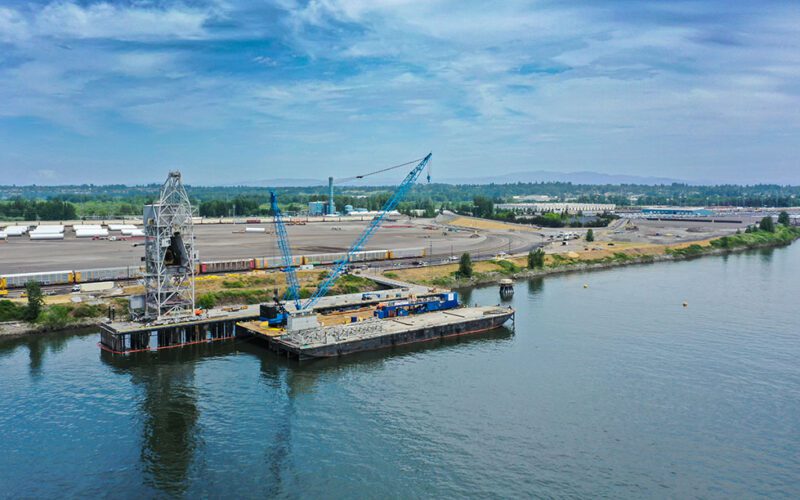
As competition for cargo continues to intensify, so does investment in infrastructure and cargo-handling equipment at seaports across the globe, especially on the West Coast.
One of the latest investment efforts has come from California Gov. Gavin Newsom, who on July 6 announced more than $1.5 billion in funds aimed at strengthening the supply chain. The funding includes about $450 million dedicated to zero-emission infrastructure, ships and other transportation modes.
“These investments—unprecedented in scope and scale—will modernize our ports, reduce pollution, eliminate bottlenecks and create a more dynamic distribution network,” Newsom said in the announcement.
Here’s a look at some of what’s happening at various seaports along the West Coast.
Port of San Diego
This Southern California seaport recently secured a significant financial boost for its National City Balanced Freight Project from the California State Transportation Agency (CalSTA) through the California Port and Freight Infrastructure Program.
The $35.5 million grant will help fund the rehabilitation of Berths 24-3 and 24-4, a pair of primary cargo berths at the National City Marine Terminal that are used by ocean-going roll-on/roll-off vessels for imported automobiles and other wheeled cargo.
It also includes realigning Marina Way, a critical access road linking surface streets to the interstate and building a rail connector and storage track. They will link to an existing loop track with a rail ladder used to build outbound trains, reconfiguring the First Point of Rest and adjacent waterfront park, while making warehouse 24-A more energy efficient with lighting upgrades.
“The National City Marine Terminal is the premier auto-processing cargo terminal on the West Coast,” the POSD said in a statement. “The grant funding will transform the terminal and adjacent marina area in two key ways. It will increase freight efficiency and terminal resiliency and it will provide a clear delineation between industrial activities and recreational activities.”
The National City Marine Terminal is part of the National City Bayfront, which includes a public park, a marina, aquatic center and other amenities. The port has been working with National City leaders and community members to rebalance public land uses.
The proposed National City Bayfront Balanced Plan would expand Pepper Park by 2.5 acres, realign Marina Way to create a buffer between recreation and maritime uses and develop east-west and north-south public access corridors with pedestrian and bicycle access.
The port plans to start an 18-month design schedule later this fall, with construction to begin in late summer 2025 and be completed by early 2027.
The port also has a number of other projects in progress, all supporting sustainable strategies such as its Clean Air Strategy and its “Health Equity for All” vision while raising productivity and cargo business opportunities at the Tenth Avenue Marine Terminal.
San Diego, with a clean-air strategy marked by some of the nation’s most aggressive clean air goals, including an effort to move all cargo handling equipment to zero emissions by 2030, has said that it’s the first seaport in North America to have all-electric, battery-supported mobile harbor cranes.
Purchased in 2022 from German-based Konecranes for about $14 million, the new cranes are expected to replace its old diesel cranes. They arrived July 14 and port staff and longshore workers are expected to be trained on the cranes’ operation and safety over the coming months. The port anticipates the cranes to be operational in December.
The new cranes eliminate a major source of pollution at the terminal and give the port a competitive edge over other West Coast seaports with a combined maximum lift capacity of 400 metric tons versus the previous 100 metric tons.
“As a port of communities, the Port of San Diego continues to take quick and significant action toward further improving air quality and public health on and around San Diego Bay,” port Maritime Director Joel Valenzuela said. “Our new electric cranes are a game changer for our communities as well as the environment and our regional economy.”
Meanwhile, Crowley Maritime has said that it’s on track to have eWolf, its all-electric tugboat, operational at the port this year. The all-electric tug, which is expected to operate exclusively on the San Diego Bay, replaces one that consumes more than 30,000 gallons of diesel per year.
The port also has been working on its $9.8 million Microgrid Infrastructure Project, which has been under construction since March 2022 and supports redevelopment efforts at Tenth Avenue Marine Terminal.
The project, which received a $4.9 million grant from the California Energy Commission, would provide back-up power to port-operated facilities, including security infrastructure, lights, offices and a jet-fuel storage system.
The new microgrid, which saw its power storage source installed this year, is expected to lower the port’s greenhouse gas emissions by about 360 metric tons of carbon dioxide, equivalent to about 1 million miles driven by a typical passenger vehicle annually.
“San Diego’s cargo operations are critical to our region’s economy and national security,” Valenzuela said. “In the past four years we have seen prime examples of just how critical cargo operations are given the chain supply issues at other ports around the country. Projects like the microgrid promote a cargo terminal that is more modern, clean, efficient and can continue to operate off the grid in an emergency.”
Port of Vancouver USA
Regarding infrastructure projects, the Port of Vancouver USA has been hard at work on two initiatives: improving Terminal 5 and breathing new life into the Berth 17 river access point to its shipping terminals.
When the Washington seaport acquired the berth and the adjacent land that is now Terminal 5 in 2009, it was a shuttered aluminum smelter whose golden days of producing material for World War II planes were long gone.
The port began working on the project in 2021, which include removing old infrastructure such as a crane and building on the dock, establishing new moorage points and upgrading dolphins. Officials also put in new fenders to ensure visiting ship and dock infrastructure are well-protected, incorporated vessel-ready shore power and made site improvements that are expected to support the revitalized dock and greater Terminal 5 development.
The port said that it anticipates the $13-million effort to revitalize Berth 17 to be done by the end of this year, and that upon completion, Berth 17 would provide transloading for future bulk operations at Terminal 5 as well as capacity for ships that need additional anchorage in the Columbia River. That includes military vessels that benefit from the deep channels and fresh water layberth.
The berth would boost Terminal 5, which has about 100 project-ready acres with extensive road, rail and deep-water connectivity, according to the port. Vancouver USA is developing Terminal 5 as a multi-million-ton bulk facility that could support one or two bulk terminal operations. The most likely products to be transloaded from rail to marine transport here would be mineral or agricultural products, the port has said.
“With the completion of Berth 17, the Port of Vancouver USA will have solidified its position as a leader in handling a diversity of bulk and breakbulk cargo on the West Coast,” the port’s Chief Commercial Officer, Alex Strogen, said. “When the project is finished later this year, Terminal 5 will be ready for dry bulk, liquid bulk, auto or a host of other bulk commodities. The access to ocean-going vessel traffic and proximity to river, road and rail make this one of the most unique opportunities in the West.”
Port of Portland
The Oregon seaport’s infrastructure effort centers around strengthening Terminal 6, its only marine container terminal. The project, known as STRONGER T6, netted $7.3 million in state funds and $24.3 million in federal (Maritime Administration Port Infrastructure Development Program) grants to help make the $42 million of improvements happen.
The grants are expected to fund replacing electrical components that lower energy use and allow for future zero-emission operations. The port also will add a stormwater system to increase water quality entering the Columbia River, put in a pair of emergency generators that could provide backup power in the event of power outages, extend and bolster nine acres of pavement for extra container storage and upgrade pavement on 30 acres of the existing container yard.
“Without these improvements… businesses and workers throughout the Pacific Northwest, especially those in rural and disadvantaged communities, would lose their most cost-effective and reliable access to national and global markets,” Port Chief Operating Officer Dan Pippenger remarked when the funding was announced last November.

Port of Prince Rupert
The Prince Rupert Port Authority is moving forward on its Ridley Island Export Logistics Project, part of the port’s plan to fully integrate its intermodal activities. In March, the port received federal authorities’ determination that the project was unlikely to cause any significant environmental impact, paving the way for the estimated $250-million project to move forward.
Now the port is proceeding with early site preparation, including tree clearing and other activities and encompasses bulk and breakbulk transload facilities, an intermodal rail yard and a container storage yard to be located on the southern portion of Ridley Island.
When complete, the development would allow the port to have “an innovative and competitive transloading facility” for cereal grains, lumber, specialty agriculture crops, plastic pellets, pulp and other commodities that could be put directly into containers from rail for export. About 400,000 TEUs of export capacity is expected to be created in the first phase of the project, with the future potential to grow to 700,000 TEUs.
“The new export logistics facility will increase efficiencies in export supply chains, maximizing value to Canadian exporters while supporting the substantial growth of the intermodal business at the Port of Prince Rupert,” the port authority said in a statement.
It would also, according to the port, help curb land impacts by putting transload activities into one location on Ridley Island. That would limit truck congestion and pollution by using proximity to Fairview Container Terminal through the dedicated Fairview-Ridley Connector Corridor, a move that capitalizing on the use of rail on common infrastructure.
Meanwhile, Vopak Pacific Canada and AltaGas are teaming up on an effort to develop the Ridley Island Energy Export Facility project, a liquefied petroleum gas and bulk liquids terminal with marine infrastructure on the island, the company announced in April.
The project, which already has key federal and provincial permits to build storage tanks, a dedicated jetty and rail and other support infrastructure, would be situated on a 190-acre site at the port, next to AltaGas and Vopak’s Ridley Island Propane Export Terminal. The terminal has been operating since April 2019.
The plan is to embark on construction and open service in phases. AltaGas would take on building and running the facility. Both companies expressed excitement for the venture, which could give the port and the region a distinct edge in serving Asian markets.
“Canada has a structural advantage in delivering LPGs into Asia from its world-class resources and through the shortest shipping time and lowest maritime emissions footprint,” AltaGas President and CEO Randy Crawford said. He added that AltaGas delivers more than 12% of Japan’s propane and 12% of South Korea’s LPG imports.
“(The facility) fits our corporate strategy of operating long-life infrastructure assets that connect customers and markets and provide resilient and durable value for our stakeholders,” Crawford said.
Port of Longview
The Port of Longview has been focused on three main infrastructure projects: the International Way Grade Separation Project, the Industrial Rail Corridor Expansion Project and the Berth 4 Redevelopment Project.
In the separation project, the port is exploring constructing an overpass at the International Way grade crossing to help traffic flow more efficiently. The port anticipates the intersection to be more congested as port activities grow.
The expansion project seeks to build on the original Industrial Rail Corridor. When the corridor was finished in 2004, it allowed the port to link directly to mainline rail service, encouraged significant growth and drew a new grain terminal.
Now, to keep pace with demand, the port’s proposing a multi-year expansion estimated to cost at least $76 million and involve building new tracks near the current corridor. Two new tracks would be added, along with boosting the current tracks’ length by 1,000 feet.
“Completion of the expansion will double freight capacity through the corridor, capitalize on the port’s geographic location and (generate) significant economic benefits for the local community,” the port explained in a statement.
The Berth 4 project, estimated at $10 million, has been a long-term effort to reimagine the site of a grain elevator complex that contributed to the growth of the port through much of the 20th century before the last company to operate it closed in 1989.
In 2012, the port started redeveloping the site with the demolition of the original dock.
The port, which was given final permits to demolish the grain complex and nearby facilities, began to tear down the facility in June. Once the demolition and site preparation are done, the port plans to pursue a new use for the space.
KAREN ROBES MEEKS, a Southern California native, is an award-winning journalist with more than 20 years’ writing experience. Her articles have appeared in the Los Angeles Times, San Francisco Chronicle, Orange County Register and Long Beach Press-Telegram, where she worked as a reporter for nearly 14 years. Her work has been recognized by the California News Publishers Association, the Associated Press News Executives Council and the Los Angeles Press Club.

